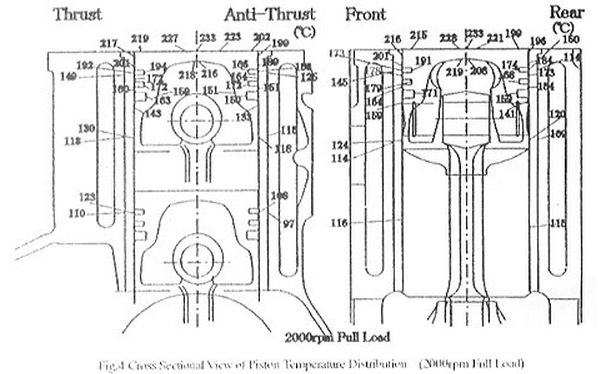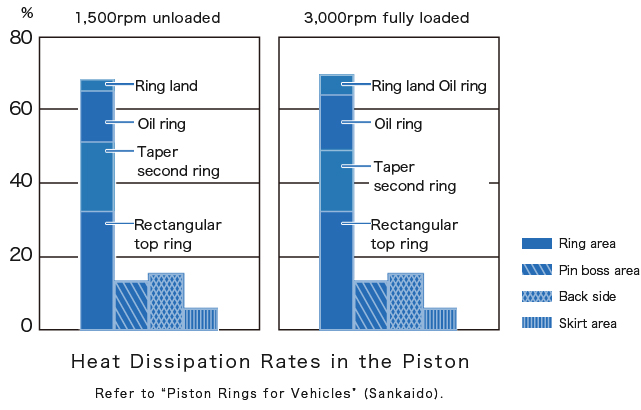Technologies that Assure Ring Function
C-4 Heat Transfer
Transferring Piston Heat to the Cylinder
The piston and top piston ring come into direct contact with hot combustion gases. The figure below shows typical temperatures of the various cylinder system components in an operating engine. As can be seen, temperatures range from approx. 184 to 201 in the area near the piston rings.

The heat energy in the piston is absorbed by the rings. The rings then transfer this heat into the cylinder walls and eventually into the engine coolant or into the surrounding air (air-cooled engine). The table shown below provides data on this heat dissipation and transfer phenomenon under different engine operating conditions.

Since the piston rings are in firm contact with both the piston and cylinder wall, they can 'take' heat energy from the piston and transfer this heat into the cylinder. The graph above shows that approx. 70% of the piston's heat is carried away by the piston rings, under both unloaded and loaded engine operation conditions, at 1,500 and 3,000 rpms.
The piston ring designer is very aware of the rings' heat transfer function and is careful to select the right piston ring materials and correct dimensions to ensure adequate cooling effect on the cylinder system components.






